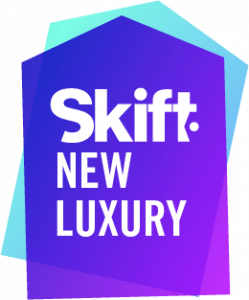Skift Take
Well-appointed luxury comes at less than a premium in smaller markets, and it's an excellent entry point to demonstrate high-quality hospitality for a new generation of travelers put off by high-priced glitz.
 The Skift New Luxury Newsletter is our weekly newsletter focused on the business of selling luxury travel, the people and companies creating and selling experiences, emerging trends, and the changing consumer habits around the sector.
The Skift New Luxury Newsletter is our weekly newsletter focused on the business of selling luxury travel, the people and companies creating and selling experiences, emerging trends, and the changing consumer habits around the sector.
In addition to providing this weekly digest with stories that are relevant to the sector, Skift is expanding its coverage of the sector with stories like you find below.
[signupform id=”91580e75-6c0e-4e11-8df7-7f1dd2376b1f” text=”Interested in more stories like this? Subscribe to Skift’s New Luxury Newsletter to stay up-to-date on the business of modern luxury travel.” class=”purple”]
Just like everyone else in the travel industry, luxury hospitality operators are looking for new markets to explore. In the United States, what’s next is the rise of the second-tier city.
From Cincinnati, Ohio to Richmond, Virginia over to Minneapolis, Minnesota, and Oklahoma City, secondary and tertiary cities have gone through a renaissance. As America’s major urban centers become unwieldy and expensive, millennials in particular are surging to these creative hubs where rents are low and job growth is on the rise (businesses also being attracted by real estate prices).
These places are getting ready for prime time, just as high-end travelers are looking for new places to explore. Sometimes, all it takes for a secondary city to reach its tipping point in terms of attracting the wandering eyes of the luxury set is the opening of a high-end hostelry.
Development in the luxury sector in these markets is threefold. You have the big guns, like Four Seasons and Ritz-Carlton, that are dabbling in markets like St. Louis, Charlotte, and Baltimore. There are other, more local boutique groups, like 21c Museum Hotels and Aparium Hotel Group, that, while not classic luxury brands, are building properties providing a different generation of luxury travelers with the amenities they crave. Finally, there are the loyal homegrown owners looking to give a boost to their communities.
The Ivy Hotel, a Relais & Chateaux property located in the heart of Baltimore, opened in 2015. It’s co-owned by the founder of the Baltimore-based Brown Capital Management and by the Azola family, which runs a local business specializing in adaptive reuse. In Albuquerque, Hotel Chaco is set to open at the end of April. The owner of this built-from-scratch homage to the UNESCO-designated Chaco Canyon is none other than Heritage Hotels & Resorts, a New Mexico-based hospitality company. The titleholder of Richmond, Virginia’s Quirk Hotel is a scion of a family that has been part of the city’s business and philanthropy scene for decades.
On another hand, there are the new kids on the block. Among them are Kentucky-based 21c Museum Hotels and Aparium Hotel Group, based in Chicago. Both companies are taking advantage of congruent trends–younger consumers shying away from big brands and more development money going into urban centers of second-tier cities.
According to Aparium co-founder and chief operating officer Kevin Robinson, “We are opportunistic in filling the void in the industry in secondary and tertiary markets.” How is Aparium going about this? The company is “preserving buildings that are deep-rooted in the local place,” notes Robinson. Examples include the Charmant Hotel in La Crosse, Wisconsin, built in an early-20th century chocolate factory, and Hewing Hotel in Minneapolis, formerly a farm implement warehouse.
While the 21c Museum Hotel in Oklahoma City was built out of a Ford Model T assembly plant, this brand’s mission is more about art and community than adaptive reuse per se. There are 21c properties in markets including Louisville, Cincinnati, and Bentonville, Arkansas.
The standby five-star luxury brands might pooh-pooh their latter-day cousins’ claims of luxury. After all, their amenities may not be aligned with those of traditional five-star sites. Their rates are usually cheaper–Aparium co-founder and CEO Mario Tricoci estimates that a $200 suite at the Charmant would run beyond $700 a night in New York. Still, these hotels are usually top-of-the-line in their respective markets. They may cost an arm, but not a leg.
Often, when the littler guys prove the market, big brands sense opportunity and ponder putting their imprimaturs on a place. But it can work the other way as well. As quoted in Baltimore Magazine, Baltimore’s Ivy Hotel co-owner Martin Azola notes, “We all think we have a sleeper here, a town with a lot of unmet potential. As far as the price and testing that potential, the folks at Four Seasons (which opened in 2011) really set the stage, and they’ve been successful.”
The Daily Newsletter
Our daily coverage of the global travel industry. Written by editors and analysts from across Skift’s brands.
Have a confidential tip for Skift? Get in touch
Tags: luxury
Photo credit: A rendering of a room in the new 21c Museum Hotel in Oklahoma City, a potential new luxury market. 21c Museum Hotels
